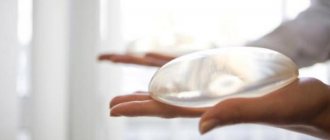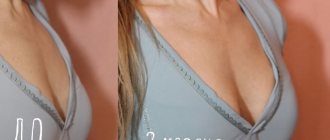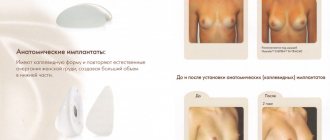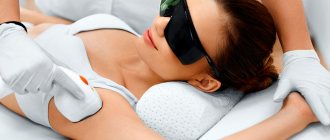As Olga Mishutkina, head of the department of plastic surgery and therapeutic cosmetology at City Clinical Hospital No. 11, said, she performs 5 to 8 breast augmentation operations and about three breast reduction and lifting operations per month. According to her information, demand for all three types of operations is steadily growing in Barnaul. This is due to the fact that information about breast surgery has become more accessible to women, the doctor believes.
The Anthurium clinic also claims an increase in the number of operations every year. The clinic's doctors attribute this to the fact that many women no longer hide the results of surgery and are willing to write reviews.
Bigger and more beautiful
Breast augmentation surgery is usually performed under general anesthesia. The duration of the intervention, as a rule, does not exceed two hours. The method of implant installation, as well as the method of access, is individual in each case. The patient is discharged from the hospital on the second day after surgery. On the 7th day, the sutures are removed.
The cost of the operation includes:
- consultation with a plastic surgeon;
- operation;
- anesthesia;
- medical support (medicines, consumables, etc.).
The cost of the operation does not include and is paid separately:
- implants;
- compression underwear;
- preoperative examination;
- hospital stay.
The cost of implants depends on their brand and shape. Anatomical ones are more expensive than round ones. French implants are cheaper than American ones.
You can enlarge your breasts not only with the help of artificial implants, but also with your own fat. This type of operation is called lipofilling . The body does not perceive its own fat cells as foreign, and therefore a rejection reaction or allergy is virtually impossible. In addition, after such an operation there will be no scars, but the breasts will grow by 1-1.5 sizes - no more. At the Russian Railways hospital, breast lipofilling costs 70 thousand rubles.
Breast enlargement
Correction of the shape of the mammary glands is one of the most frequently performed operations in plastic surgery. This is largely due to the fact that many women pay increased attention to the parameters of their bust and easily agree to correction. However, despite all this, such an intervention requires knowledge, professionalism and experience from the plastic surgeon.
Surgical interventions on the mammary gland in order to improve aesthetic parameters come down to solving three problems:
- increase in volume
- volume reduction
- improving the shape of the breast, i.e. lifting.
Augmentation mammoplasty Breast augmentation is one of the most frequently performed operations in aesthetic surgery. Today, breast augmentation is performed only with implants. Silicone gel, which was used quite widely in the past, is now prohibited for use, since without a shell, the gel sooner or later leaves its location and simply spreads over the muscles in different directions, causing gross deformations. Silicone gel also causes silicomas and in some cases can lead to life-threatening complications.
Implants Choosing an implant is one of the most serious tasks that a surgeon must solve, based on the aesthetic requirements of the patient, the condition of her tissues and safety. There are two main shapes of implants: round and anatomical (teardrop-shaped). Round ones are divided into low-profile (inverted saucer) and high-profile (inverted bowl). In modern implants (third generation), the shell is made of thin sheets of silicone, alternating with non-silicone barrier layers, and has a textured (rough) surface. The multilayer structure minimizes the “sweating” of the filler towards the tissues and, conversely, the passage of biological elements into the prosthesis, and the textured surface reduces the incidence of capsular contracture due to good fixation in the tissues.
The most widely used is highly cohesive silicone gel. This is a silicone-based polymer, which is very soft but not liquid and does not leak out if the implant is damaged. But there are models that are filled with saline or hydrogel. Fillers such as soybean oil, algae extract and others are not certified in Russia, and therefore will not be considered by us. When filled tightly with saline, the prosthesis becomes harder than the breast tissue; when filled weakly, it produces a strong sound of splashing water when the patient moves, which can be heard even by others. Recently, prostheses with hydrogel have appeared (hydrogel consists of 95% water and 5% cellulose polymer or other polysaccharide). However, after 4-6 years the gel separates into its components, and the breasts take on an unnatural appearance and may produce a crunching sound upon palpation. Now the production of these implants has been suspended due to falling demand for them.
Technique of the operation There are three approaches through which a bed for the implant is formed and inserted.
The inframammary access is considered the safest and most convenient, when a 4-6 cm incision is made in the fold under the mammary gland. Periareolar (along the lower border of the pigmented skin of the areola) access is considered moderately safe due to the likelihood of damage to the milk ducts and impaired sensitivity in this area. An incision is possible if the areola diameter is over 2.5 cm; a smaller size will not ensure the passage of the implant. The scar after such access is almost invisible. Access from the armpit is considered the most aesthetic, but unsafe. In this area there are a number of anatomical formations, damage to which leads to serious consequences; therefore, endoscopic equipment is needed to perform the operation. Endoscopic installation of implants through the axillary approach ensures the absence of postoperative scars in the breast area. The scar is located in the axillary region along the skin folds and after the scar matures and becomes white, it is practically invisible. This operation is relevant for graceful women with a small layer of subcutaneous fat. To ensure that the breasts look natural and the upper pole is not spherical, the implant is installed under the pectoralis major muscle. Typically, the implant is chosen to be drop-shaped and in order to correctly orient it under the muscle and gland, visual control using endoscopic equipment is necessary. Our clinic uses a set of endoscopic equipment from the best Japanese and European manufacturers. Shape correction
The most common operation is mammopexy, i.e. correction of drooping mammary glands, elimination of its ptosis. The indication for mammopexy is prolapse of the mammary gland with preserved volume (i.e., the size of the gland satisfies the patient). Surgical intervention involves the following stages:
a) moving upward and reducing the nipple with areola, which in this case is lowered and stretched;
b) creation of a new, conical shape of the gland;
c) removal of excess skin covering the mammary gland.
Lifting the mammary glands only by removing excess skin is not complete since the prolapse of the glandular tissue itself remains and only the skin will not be able to support the weight of the mammary gland for a long time; the breast will sag again, stretching the postoperative scar. In our clinic, when performing mastopexy, the stage of changing the shape of the glandular tissue itself and fixing it in an elevated position to the chest wall is necessarily carried out.
Mastopexy can be performed in different ways - an incision only around the areola with a decrease in its diameter, a vertical incision, a comma-shaped incision and an inverted T-shaped incision. The choice of surgical approach is decided by the surgeon together with the patient, depending on the shape of the gland and the degree of ptosis.
Complications with this type of operation are quite rare and are of a general surgical nature: hematomas, suppuration of postoperative wounds, and others.
Specific ones include marginal necrosis of the skin resulting from excessive tension of its tension, and, as a consequence, tissue ischemia. Volume reduction
The operation of reducing the volume of the mammary glands is called reduction mammoplasty. The principle of its implementation and technique are the same as for mammopexy. The only difference is that during reduction surgery part of the glandular tissue is removed. The indication for surgery is hypertrophy of the mammary glands, which, if severe (grade 4-5), can lead to spinal deformity and, as a consequence, vertebrogenic insufficiency. Aesthetic indications for surgery are determined only by the patient’s wishes. Complications, as with the previous type of surgery, are quite rare.
Contraindications
Fibrocystic mastopathy without cell atypia is not a contraindication to surgery. On the contrary, specialized literature indicates that placement of an implant inhibits the development of mastopathy. In the presence of proliferative forms of fibrocystic mastopathy, prosthetics is also not contraindicated; it is an integral part of the operation for subtotal resection of the affected gland and allows you to immediately replace the removed organ with a prosthesis.
Features of care
Early postoperative care is provided by medical staff in the hospital, where the patient stays for 2-3 days. Upon discharge, the following recommendations are issued: - for a month, restriction of physical activity, a ban on visiting the sauna, bathhouse, swimming pool, and refusal to take baths; - during the first two weeks, wearing compression garments even during sleep, later (3 months) the regime is more relaxed; -self-massage: once a day, usually in the morning, while taking water procedures, the woman grabs the gland with the implant with her thumb and forefinger and makes 5-6 rocking movements; the second technique is pressing on the chest. These manipulations allow you to stretch the capsule in all directions.
Smaller and healthier
Women not only enlarge, but also reduce their breasts. Excessively large breasts cause various medical problems: skin irritation, back and neck pain, poor posture. In such cases, reduction (reducing) mammoplasty , which removes, in addition to fat and skin, gland tissue.
Such operations are often performed simultaneously with a lift ( mastopexy ). The cost of surgery often depends on the degree of ptosis (drooping). Normally, the nipple is at or above the level of the fold of skin at the base of the breast. The lower it goes, the higher the degree of ptosis, and the more difficult and expensive it is to perform the operation.
Sometimes women only need a lift without a size reduction. In both the first and second cases, the operation is performed under general anesthesia for 2-3 hours. They are discharged from the hospital on the second to fourth day. The sutures are removed on the 14th day.
The rehabilitation period after such operations lasts 1.5–2 months. To avoid complications, clinics offer postoperative management of patients. This is usually paid separately. During this time, you must wear a special compression bra. For the same period, you need to give up physical activity, sports and visiting the sauna.
For the next two days after surgery, you should not drive a car or drink alcohol. For the first week after breast shape correction, it is recommended to sleep on your back. The primary outcome of the operation is usually assessed after two months.
Women's breasts, bra.
CC0
Indications for breast surgery:
- small breast size;
- mastoptosis (sagging mammary glands);
- disproportionately large breasts.
There are many reasons that caused this or that deformation. This may be a congenital feature, the result of weight loss, a consequence of pregnancy and breastfeeding, aging (overstretching of the skin and sagging of the breasts due to gravity).
Only a certain type of mammoplasty (enlargement mammoplasty, mastopexy, reduction (reduction) mammoplasty) can effectively correct these aesthetic defects.
About the disadvantages
Despite some advantages, mammoplasty does have disadvantages. Firstly, any operation involves the use of anesthesia, which in itself is harmful. Secondly, after surgery, scars inevitably remain, albeit small ones. In the early recovery period you will have to deal with pain.
Implants will impair the quality of mammograms and make it difficult to detect tumors in the breast. Sometimes after operations, women encounter tissue sensitivity disorders and difficulties feeding the child. Although now the risk of such complications is minimized if the patient turns to a highly qualified specialist.
One step away from the goal: preoperative planning
At the first consultation, the patient and surgeon jointly evaluate the existing mammary gland, and if there really is an aesthetic problem, preparations for surgery begin. In mammoplasty, 50% of success depends on proper preoperative planning. This is especially true for augmentation mammoplasty.
First, the doctor must select the optimal shape and size of silicone implants. When choosing, the woman’s wishes and her anthropometric data (height, weight, body type, chest volume, etc.) are taken into account.
Enlargement within the existing mammary gland leads to a natural contour; if the patient wants an increase in volume, the natural aesthetic result will inevitably disappear.
Sizers (external implants) will help you imagine what the mammary gland will look like under clothing without a bra. With their help, the plastic surgeon will help you decide at the initial consultation which breast size is right for you.
It is important for patients to understand that no two women have the same breasts. Therefore, of course, you can bring a photograph of a breast that you like, but the surgeon will not be able to make “exactly the same” one, because, after all, he is not working with clay, but with living tissue!
Before surgery, all women must undergo an examination, ultrasound examination of the mammary glands and mammography. The presence of benign tumors is not a contraindication for mammoplasty, but after the placement of silicone prostheses, their observation will be difficult.
As a rule, surgeons recommend doing any type of mammoplasty after pregnancy and lactation, because The shape and size of the operated breast will necessarily change and, unfortunately, not for the better. In addition, mastopexy and reduction mammoplasty can damage the function of the mammary glands.
Postoperative rehabilitation
Rehabilitation after breast surgery is generally the same. The patient spends 3 days in the clinic’s hospital, then she is sent home. Soreness in the chest area usually goes away completely within a week. The stitches are removed in 8-10 days. In the first few weeks after surgery, edema (breasts become swollen) persists and appear firmer and fuller. As the scars heal, the shape of the mammary gland will change for the better.
For 4-6 weeks after breast surgery, it is mandatory to wear compression garments (a special surgical support bra, similar to a sports jersey).
For two months after mammoplasty, any physical activity is contraindicated; active exercises, especially arm movements, should also be limited.
Ideal breasts: about the results of mammoplasty
The results of mammoplasty are always noticeable. You can evaluate the first effect of breast correction after 2-3 months, and the final aesthetic result comes after complete healing of the scars (6-12 months).
The success of mammoplasty is determined by the naturalness of the resulting breast contours. The more natural a woman’s breasts look, the higher the quality of the work done by the surgeon.
However, no doctor will give a lifetime guarantee for a beautiful breast shape, just like a “lifetime guarantee for youth.” Breasts, like the rest of the body, will age (sink under the influence of gravity or after pregnancy and lactation). Therefore, many women sooner or later come back for breast augmentation surgery; this can happen after 7-10 years, or maybe after 20 years. Such operations are successfully practiced by plastic surgeons around the world.










